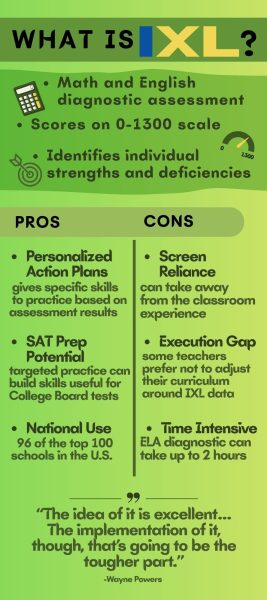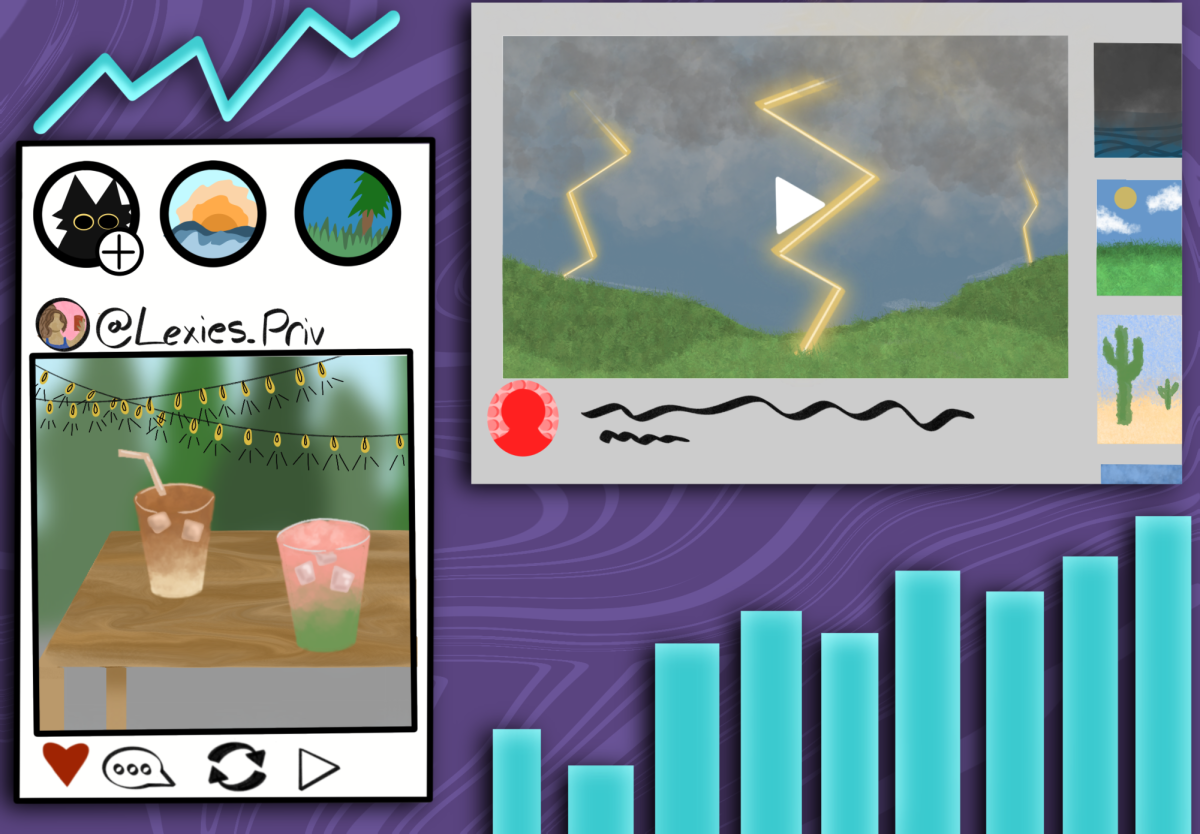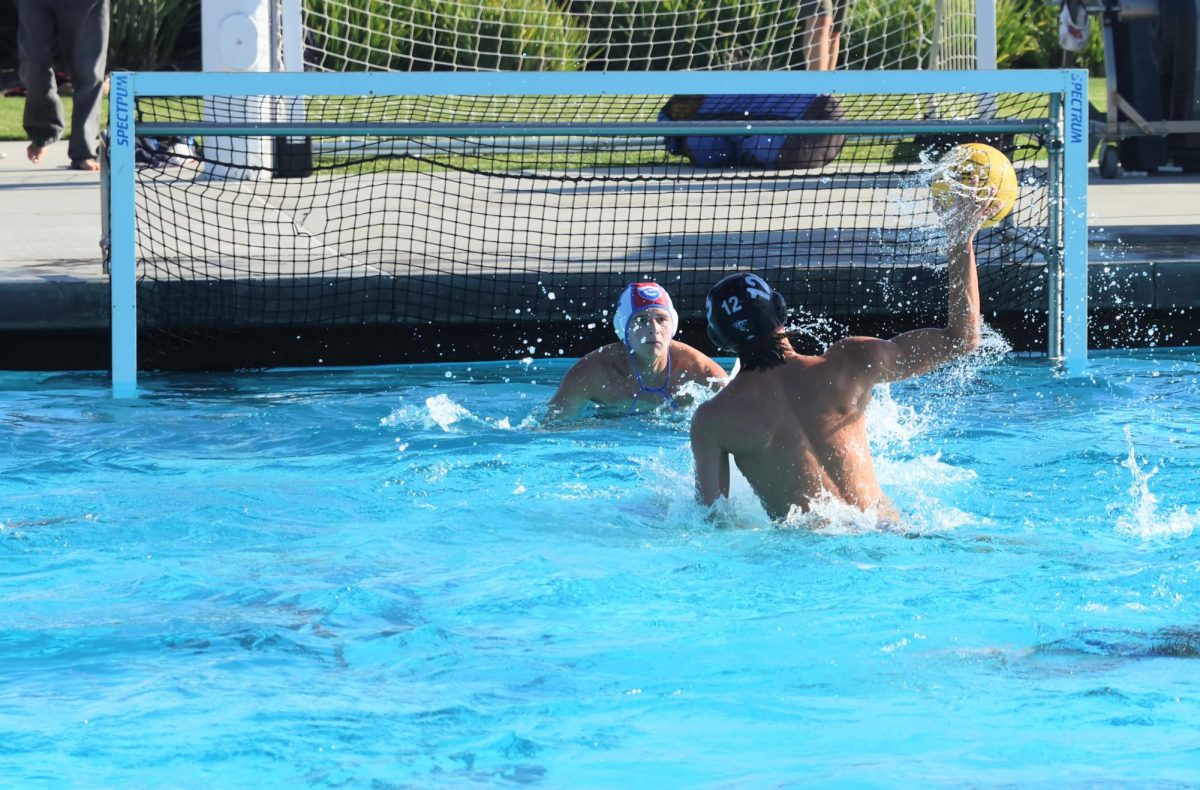“In theory, yes, this sounds like a great idea to figure out where everyone is,” English teacher Jennifer Kindred said after her classes completed IXL’s English Diagnostic. “In practice, that test was far too long,” she said.
For students and staff at Foothill Technology High School (Foothill Tech), IXL quickly made a strong impression. Teachers said the program was unique in assessing and individualizing a student’s learning experience, but unbearably long for students to actually attempt to do well on.
Major school districts across the United States, including Ventura Unified School District (VUSD), have begun to introduce IXL’s LevelUp Diagnostic, which serves to replace the benchmark that was previously written by VUSD. The older version was a fixed test written to match Common Core state standards, where students worked through a set number of questions and received a score based on how many they answered correctly.
The IXL diagnostic, however, pinpoints individuals’ weaknesses by starting broad, then narrowing in with questions that match their skill level. Once a student completes the timed assessment, they receive a score out of 1,300, which corresponds with their expected grade level. From there, IXL’s Diagnostic Action Plan allows teachers to assign individual lessons to each of their students to practice the skills they should improve upon.
The IXL LevelUp Diagnostic is meant to modernize the classroom experience by encouraging students to take ownership of their individual learning. In practice, however, many Foothill Tech teachers noted that assigning additional homework to address skill-based deficiencies felt cumbersome when stacked upon the regular homework load.

“The idea of it is excellent … I completely agree with the philosophy of it. The implementation of it, though, that’s going to be the tougher part,” Wayne Powers, one of Foothill Tech’s math teachers, said. Powers explained that the diagnostic could provide teachers with valuable common assessments and a clearer picture of how Foothill Tech students compare to peers in other schools, but he hasn’t yet put enough time into the program to feel comfortable giving up class instruction time for it.
Powers also reflected on past benchmarks, noting that a few years back, teachers like him helped write the math benchmarks, ensuring they aligned with what was taught in class. More recently, the district took over, pulling questions from a variety of sources. “The math behind it is the same, but the way they couch the problem is different,” he said, explaining how this left students confused and often performing worse.
For Powers, IXL might resolve that mismatch, but only if teachers can figure out how to integrate it meaningfully. “As I get to learn the IXL better, hopefully I’ll use it to enhance their learning,” he said. “I think it has promise.”
Students also had mixed feelings about the switch to IXL. “I thought it was a waste of time,” Grace Kopp ‘28 said, “It just gave us a little number saying, ‘Oh, this is your smart level’ that we could compare with the class … I don’t know if that made me feel better or worse.” Others, like Ayla Evans ‘27, felt that the math diagnostic was easier to work with than the past benchmarks and liked that it could help prepare students for the SAT. If the teachers found the time to incorporate these topics into personalized homework for each student, there is no telling how successful it could be.
Kindred acknowledged that IXL’s purpose is solid, noting that some of the questions she saw her juniors working through were “legit … a skill that people need.” But in practice, she found the test unnecessarily long, stretching across multiple class periods when a shorter version of the assessment could have been just as effective.
Like Powers, Kindred also found the Action Plan difficult to put into practice. “If you only have one student or five students, you get this report … Awesome, I will come up with an individual plan. But when you have 200 students, and now you have 200 separate plans, how would I implement 200 separate plans?” She appreciates the goal and idea of the IXL Diagnostic, but its length and scale make it hard to fit into an already packed curriculum.
As with most changes at school, students were quick to treat IXL with skepticism and annoyance. “I hate [it],” Makayla Kearns ‘26 said, “It was very boring, and I feel like there’s definitely a better way to do it.”
Evans added that the assessment stretched across multiple periods, being two hours long and cutting into valuable AP class time, while others admitted that they started clicking through random answers just to finish. For teachers and students alike, the excessive length of the English assessment overshadowed the possible benefits it might offer.
IXL has advantages and drawbacks, but it reflects the efforts of not only Foothill Tech but VUSD as a whole to expand opportunities for students to strengthen their English and math skills. While the amount of time required for these assessments may take some adjustment, many believe the diagnostic has the potential to provide meaningful benefits.

















